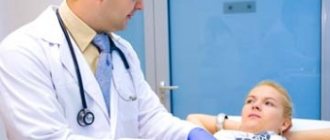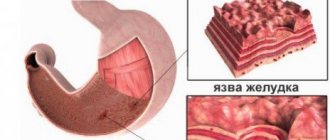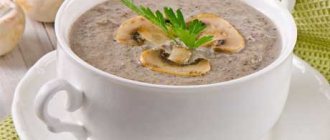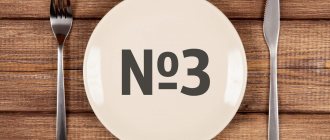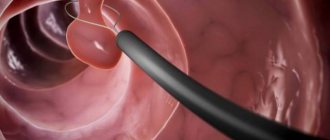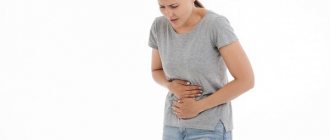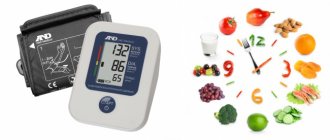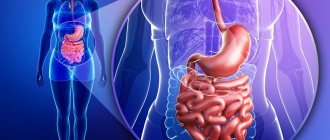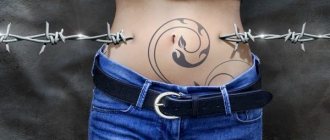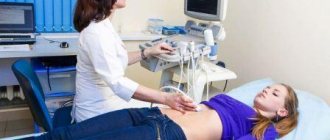Dysbiosis is a disease in which the balance of bacteria in the intestines is disrupted. As a result of this, the sick person begins to experience digestive problems, stomach pain, problems with stool and other unpleasant symptoms. Diet for intestinal dysbiosis in adults is the basis of treatment, which requires compliance with a number of rules, some of which are selected by the doctor individually, based on the symptoms.
Features of dysbiosis
A harmonious ratio of the number of microorganisms that promote rapid absorption of vitamins and minerals ensures the normal functioning of the intestines.
Beneficial bacteria help eliminate toxins and harmful substances that negatively affect the functioning of the body, normalize metabolic processes, and synthesize amino acids. Intestinal microorganisms are:
- bifidobacteria;
- lactobacilli;
- bacteroides.
Nutrition for dysbiosis is aimed at the spread of beneficial bacteria, restoration of intestinal microflora, and relief of disturbing symptomatic signs.
The principles of a therapeutic diet are:
- balance and variety of the daily menu;
- fractional meals;
- maintaining a time interval between meals;
- refusal of overeating, fasting, dry food;
- eating only freshly prepared foods;
- heat treatment: you can eat boiled, steamed, stewed, baked food;
- compliance with the temperature regime of consumed products;
- limiting protein and fatty foods.
The basic principles of the diet when intestinal dysbiosis is detected in children and adults are split meals (at least 6 times a day), a balance of consumed amino acids, fats, carbohydrates and proteins. Drinking regime is the main component of the normal functioning of the gastrointestinal tract. With proper nutrition for dysbiosis in children and adults, it is necessary to consume a sufficient amount of liquid (at least 1.5-2 liters) 30 minutes before meals or 2 hours after meals.
Diagnosis and treatment
Dysbacteriosis is a dangerous disease that, if left untreated, can lead to such serious consequences as metabolic disorders, gastritis, colitis, and anemia. To identify the disease, it is necessary to undergo a medical examination.
After examining the patient and studying the medical history, the gastroenterologist prescribes a number of diagnostic procedures:
- Ultrasound of the abdominal cavity;
- general and scatological analysis of stool;
- blood test for biochemistry;
- PCR diagnostics (polymerase chain reaction);
- ion and gas-liquid chromatography.
If the examination shows the presence of dysbacteriosis, the doctor prescribes appropriate treatment. The treatment regimen depends on the stage and progression of the disease. For dysbiosis in adults at an early stage, it is recommended to take probiotics and diet. A nutritionist can adjust a correct and effective diet. He will tell you how to eat properly and create a dietary menu for the week to restore normal intestinal microflora.
Main reasons for development
Violation of the ratio of opportunistic and beneficial bacteria in the intestines can cause diarrhea (diarrhea). As a rule, this pathological condition is not an independent disease; it only indicates the presence of a disease. Diarrhea is a signal of the progression of an intestinal disease, accompanied by impaired absorption of water.
In addition, the appearance of diarrhea is often associated with the inability of the intestines to absorb nutrients, as well as with active contractions of its walls (food is poorly digested and not absorbed). Each section of the gastrointestinal tract (gastrointestinal tract) receives additional load, because the previous one did not cope with its functions.
- bloating;
- sharp pain in the abdominal cavity;
- strong feeling of thirst;
- muscle weakness;
- dizziness;
- loose stools;
- dyspnea;
- cold sweat;
- nausea;
- dryness of the mucous membranes of the mouth;
- increased blood pressure;
- strong gas formation;
- decrease in body temperature.
The main factors causing intestinal dysbiosis are:
- gastrointestinal diseases: cholecystitis, pancreatitis, gastritis, intestinal diseases, stomach ulcers, duodenal ulcers;
- infectious, viral diseases;
- worms;
- changes in hormonal balance, pregnancy in women;
- unbalanced diet;
- long course of taking antibiotics, hormonal, anti-inflammatory drugs;
- allergy;
- performing surgery;
- exposure to stress;
- bad ecology.
Factors that negatively affect the functioning of the immune system lead to weakening of the body and intestinal dysfunction. Infectious and viral diseases and an unbalanced diet are the main causes of the development of dysbiosis.
Symptoms of the disease
There are 4 stages of the disease, each of which has its own characteristics:
- 1st stage . Characterized by a slight change in the number of beneficial and pathogenic microorganisms. Most often it occurs due to taking antibiotics or changing diet. At this stage, discomfort can only be manifested by rumbling in the stomach. After eliminating the factor that negatively affected the microflora, its independent restoration is possible.
- 2nd stage. There is a decrease in appetite, formation of gases in the intestines and a metallic taste in the mouth. Very often, constipation or diarrhea occurs, which can alternate. Rashes appear on the skin that cannot be treated.
- 3rd stage. Inflammation of the intestines develops, which leads to severe abdominal pain. Symptoms characteristic of the second stage progress. During defecation, you may notice the remains of undigested food. Mandatory medical treatment is required.
- 4th stage. Pathogenic microorganisms have almost completely colonized the intestines. Beneficial elements entering the body with food cannot be absorbed, which leads to the development of vitamin deficiency and anemia. A person feels a constant loss of strength, depression, and sleep is disturbed. This stage is characterized by the rapid development of infectious and inflammatory bowel diseases.
Symptoms of dysbiosis
Treatment should be carried out by a specialist. This is a fairly serious disease that can lead to disastrous consequences if left untreated. Only in the first stage is treatment possible at home, which will consist of taking probiotics and following a diet.
Video: Symptoms of dysbacteriosis
Dietary rules for dysbiosis with diarrhea
Pathogenic microbes entering the intestines cause inflammation, fermentation, and acid-base imbalance, which is often accompanied by diarrhea. To quickly normalize the microflora, it is necessary to provide the patient with proper nutrition. It should help eliminate toxins, not irritate the intestinal walls, and provide conditions for the growth of beneficial microorganisms. Therefore, you should adhere to a certain diet and a specially designed treatment course.
Nutrition for dysbiosis does not imply the use of hard-to-find and exotic products. All dishes must be freshly prepared; aggressive food processing (deep frying) is not allowed. Besides:
- meals should be frequent (5-6 times a day), in small portions;
- baking in the oven, steaming, boiling are ways to normalize the digestion process;
- you need to minimize salt intake;
- The dishes should not be too cold or hot, because... it is equally harmful to the irritated gastrointestinal tract;
- if putrefactive processes occur in the intestines, fatty and protein foods should be limited;
- It is better to eat at the same time, which will allow you to develop a reflex for the synthesis of digestive juices and enzymes.
If you have dysbiosis with diarrhea, you don’t need to starve, but the first thing you should do on the road to recovery is to give up foods that are harmful and hinder the restoration of intestinal microflora.
The diet involves limiting or completely eliminating:
- fatty meats (lamb, pork, duck, goose);
- sweets, baked goods, confectionery products with a high sugar content;
- fish (salmon, herring);
- whole milk, powdered milk, cheese, ice cream;
- sausages, any prepared meat delicacies, smoked meats;
- spices (pepper, garlic, mustard), marinades, spicy foods;
- mushrooms;
- radishes, spinach, sorrel, cabbage;
- carbonated drinks,
- alcohol;
- sour fruits;
- brown rice, millet, semolina;
- fried and hard-boiled eggs;
- mayonnaise;
- strong coffee, tea.
The list of prohibited products does not end there. For each patient, the doctor, depending on the existing symptoms and the presence of the disease, selects a menu individually. For example, a diet for intestinal dysbiosis with diarrhea involves avoiding raw vegetables and fruits. Although the fight against microflora disturbance, which is accompanied by constipation, cannot be imagined without these products.
Recommended dishes
Natural products with a high content of pectins have a positive effect on the composition of the intestinal microflora during dysbacteriosis, therefore, if there are no individual intolerances or contraindications, patients can enrich their diet daily with dishes based on black currants, peaches, and apples. In addition, the following products are considered permitted:
- stale bread or with bran;
- a little butter, cheese;
- fresh dairy products;
- steamed or boiled meat, low-fat fish (turkey, chicken, carp, hake, pike, cod);
- cereals (barley, buckwheat, lentils);
- vegetable oils;
- steamed omelette, soft-boiled eggs (but no more than 2 per week);
- drinking clean water;
- pasta from durum wheat;
- greens (parsley, dill);
- baked zucchini, pumpkin, carrots, potatoes;
- unsweetened compote;
- jelly;
- honey;
- rosehip decoctions;
- berries (lingonberries, raspberries, strawberries).
Pronounced symptomatic signs
The main manifestations of dysbiosis are observed at the first stage of the onset of intestinal pathology.
Pronounced symptoms as they develop are:
- severe abdominal cramps;
- rumbling;
- increased gas formation;
- metallic taste in the mouth;
- unstable stool: alternating constipation and diarrhea;
- passing stool containing pieces of undigested food;
- skin rashes;
- decreased appetite;
- depressed, apathetic state;
- weakness, lethargy;
- sleep disturbance.
Diets for intestinal dysbiosis in adults
When dysbiosis is complicated by constipation, a person should receive food enriched with healthy fiber. It is found in fruits and garden herbs. These products will speed up the movement of food in the intestines, and constipation will gradually stop.
Breakfast – omelet, buckwheat and tea.
Snack: fresh apple.
Lunch - soup with potatoes, boiled chicken with vegetables, compote.
Afternoon snack - beet puree, grated carrots and rosehip broth.
Dinner - vegetables, curd pudding with tea.
You are allowed to drink kefir at night.
When a person develops dysbiosis, nutrition is often combined with the intake of probiotics and prebiotics. They accelerate the restoration of normal intestinal microflora.
From probiotics, the body receives bifidobacteria and lactobacilli, which inhabit a healthy intestine. Prebiotics are substances that provide bacteria with a favorable environment for growth. This way, the beneficial microflora will be restored, and it itself will eliminate pathogenic bacteria.
If diarrhea is observed, the therapeutic diet for dysbiosis in adults should begin with fasting for 2-3 days. At this stage, you should drink a lot of liquid - teas, herbal infusions, unsweetened berry decoctions. Fiber is prohibited. Compotes must be carefully filtered - in this case there will be no risk of irritation of the intestinal mucosa.
Breakfast - rice with steamed cutlets and tea.
Snack - low-fat cottage cheese or rye crackers and tea.
Lunch - meatballs, buckwheat, beef broth and a glass of jelly.
Afternoon snack - rosehip broth and crackers.
Dinner - omelet with rice.
Drink jelly at night.
If you have intestinal dysbiosis, the diet will help restore the disrupted functioning of the gastrointestinal tract. After complete recovery, you should not suddenly return to your normal diet. You should follow the diet for about another month.
Ideally, you should stick to the recommended diet in the future. This will allow you to forget about the symptoms of dysbiosis for many years.
This pathology can appear at any age, but more often children suffer from it due to imperfect functions of the immune system and digestive organs. The younger the child, the easier it is to disrupt the balance of intestinal flora. To normalize the baby’s condition, you should adhere to a certain diet maintaining a balance of protein and carbohydrate foods. The diet is developed by a doctor, taking into account the individual characteristics of the child. There are general rules for the nutritional system for dysbiosis in children:
- Any snacking is prohibited, all meals must be taken at the same time;
- dishes should be prepared according to the age characteristics of the body;
- You should drink only 2 hours after eating or 30 minutes before;
- During the diet, children must completely exclude from the diet everything fried, fatty, smoked, and spicy;
- the daily sugar intake should not exceed 2 teaspoons;
- food offered to the baby should be warm;
- The baby should be fed often and in small portions.
Up to a year
Mother's milk is the best product for a child who has dysbiosis with diarrhea. Although if the baby is bottle-fed, then a special diet will be required to quickly normalize the intestinal microflora. The main condition is the exclusion from the diet of foods that cause fermentation and irritate the intestines. For a baby with dysbacteriosis, any sweets and sour fruit juices are prohibited. Medical nutrition can be divided into two stages:
- For 2-3 days, a child should be given only vegetable purees, to which the baby is already adapted. In addition, you can feed rice, oatmeal, buckwheat porridge, slimy soups, lactic acid baby products, baked apples, compote.
- After 3 days, you can give your baby broth from veal or low-fat fish. Boiled meat, rice pudding, kefir, unsweetened cottage cheese with minimal fat content are a good addition to a child’s diet.
Over a year old
The diet of a child over one year old should be balanced, complete and gentle at the same time.
The menu necessarily includes minerals, proteins, fats, carbohydrates, and vitamins. You need to feed your baby according to a schedule, excluding snacks.
Food should be served only warm. It is necessary to completely remove from the menu: fatty and fried foods, smoked meats, mushrooms, semi-finished products, confectionery, eggs. Medical nutrition for children over one year old is divided into 3 stages:
- The diet for dysbacteriosis at the beginning of treatment includes low-fat, non-rich meat broths, boiled or stewed vegetables (potatoes, carrots, zucchini, beets). As a rule, side dishes of porridge (wheat, rice, oatmeal) are offered with boiled meat. The diet must include lactic acid products enriched with lactobacilli (yogurt, kefir), unsweetened compotes, rose hip decoction, and stale bread.
- If the symptoms of dysbiosis decrease after 3 days, the child can be given low-fat cottage cheese, jelly, fruit juices, steamed meatballs, mashed potatoes, baked apples.
- After stool normalization, vegetables and fruits can be given raw, but it is better to start with small amounts.
Dietary ration
The diet for dysbiosis in adults should include products that will help accelerate motility and normalize intestinal secretory function. Products that lead to the formation of gases should be excluded from the menu.
If there is a violation of the intestinal microflora, you must adhere to some rules:
- You need to eat in small portions 5 – 8 times a day, at the same time, chewing food thoroughly. You can't overeat. The last meal should be 3-4 hours before bedtime;
- You need to drink at least two liters of water per day;
- tea can be drunk at least half an hour after meals;
- you should not eat too many vegetables or fruits, which are contraindicated during exacerbation of dysbacteriosis;
- add to your diet foods containing lacto and bifidobacteria: kefir, ayran, bifidobacteria;
- give up spicy, smoked and salty foods, as well as processed foods and fast food;
- exclude sugar, sweets, baked goods and other confectionery products from the diet;
- Replace fried foods with boiled and stewed ones. You can steam dishes;
- If possible, do not use seasonings.
Product categories
Many drinks and foods for intestinal dysbiosis are strictly prohibited. It is important to exclude from the patient’s diet foods that burden the gastrointestinal tract and promote the proliferation of harmful bacteria:
- baked goods and sweets - such food reduces immunity, which should restrain the proliferation of pathogenic bacteria;
- fatty meat and fish, sausages, smoked meats and canned food;
- spices and herbs, marinades that irritate the intestinal mucosa;
- mushrooms - they are difficult to digest;
- carbonated water and alcoholic drinks - they aggravate fermentation, during which pathogenic microflora begins to actively multiply;
- milk - it is poorly digested;
- spinach, sorrel and radishes - they increase gas formation in the intestines.
This is a generalized list of foods that can be harmful, but individual nutrition is always selected. When constipation occurs, raw fruits and vegetables are prohibited, but when diarrhea occurs, this is a mandatory food. So the diets of two different people can differ significantly from each other.
The daily menu for dysbacteriosis consists of ingredients that do not harm the affected microflora of the gastrointestinal tract. The diet includes foods that normalize the digestion process. After antibiotics and an unbalanced menu, the diet for intestinal dysbiosis is aimed at including permitted ingredients and excluding harmful foods.
If you have dysbiosis, you should eat ingredients that benefit the intestines:
- low-fat fermented milk products;
- light soups, broths;
- cereals;
- meat: rabbit, chicken, turkey;
- dietary fish: cod, pike perch;
- vegetables: cabbage, carrots, tomatoes, cucumbers, beets, pumpkin;
- fruits: apple, plum, peach;
- greenery;
- dried fruits, nuts;
- omelet, boiled eggs;
- butter, olive oil;
- dried bread;
- cookies, crackers;
- jelly, berry compote, tea, natural juice.
Low-fat fermented milk products promote the proliferation of beneficial bacteria that normalize the state of intestinal microflora. Lean varieties of meat and fish are irreplaceable sources of protein necessary to replenish energy. Cereals used in the preparation of porridges and soups enrich the body with useful microelements, minerals, and vitamins.
If you have intestinal dysbiosis, you should not eat foods that cause rotting, fermentation, irritation of the mucous membrane of the digestive tract, or increase the production of hydrochloric acid. The introduction of prohibited ingredients after complete recovery should be carried out gradually, in small quantities.
Harmful food products that disrupt the natural intestinal microflora include:
- fermented milk products with a high mass fraction of fat;
- meat soups, broths;
- pasta, noodles;
- semolina;
- sausages;
- fatty meats: pork, duck, goose, lamb;
- fish: pink salmon, salmon, mackerel, trout;
- mushrooms;
- legumes: green peas, beans;
- vegetables: potatoes, radishes, turnips, horseradish, onions, garlic, spinach, sorrel;
- sauces, seasonings, spices, marinades;
- bakery products, pastries;
- sweet products;
- carbonated drinks;
- alcohol;
- coffee.
If you have dysbacteriosis, you should not feed your child fermented milk products whose mass fraction of fat content exceeds 10%. If the pathology is accompanied by diarrhea, fresh vegetables and fruits are excluded from the diet.
Folk recipes
After consulting with a specialist, the diet can be supplemented with infusions of medicinal herbs. We recommend combining different plants together. Herbal medicine is divided into several stages:
- Stage 1 . Plants such as St. John's wort, anise, coltsfoot are used to normalize the microflora. For disinfection, you can use chamomile, blackberry, calamus and other herbs.
- Stage 2 . The goal of healing is to relieve inflammation of the digestive tract, restore balance in the body and normalize digestion. Plants used are chamomile, achillea, marigold, St. John's wort, etc.
- 3 stages . To remove toxins from the body, flax seeds, leaves and roots of elecampane, angelica and calamus are used.
- Stage 4 . For diarrhea, it is useful to use astringents found in oak bark, saber, and incense roots. Bird cherry fruits, an infusion with burnet root and straight cinquefoil also help.
- Stage 5 . To combat constipation, you can use anise, cumin and fennel. If there is a huge amount of feces that damage the anus, you can use a mixture of buckthorn, milkweed, Alexandria leaves and hogweed.
- Stage 6 . To protect the mucous membranes of organs from the destructive effects of pathogenic organisms, the herbs elecampane, marshmallow, angelica and flaxseed will help us.
- Stage 7 . The body accordingly needs to be saturated with energy and appropriate strength. To do this, you can use an infusion of rowan, currant, rose hip, string, and strawberry. Herbs can be combined with milk sugar. Chamomile will help normalize feces and eliminate spasms in the intestinal tract; lactose will help restore microflora. Plantain is useful for diarrhea. For flatulence, you can chew fennel seeds. Another proven remedy against microflora is garlic along with fermented milk products.
Daily menu
To organize proper nutrition for dysbiosis, doctors recommend creating a detailed menu for a week or month. Following a planned diet will allow you to quickly restore damaged intestinal microflora and normalize the digestion process. The basis of the diet during the treatment of dysbiosis is eating foods in small portions at equal intervals of time. Therefore, breakfast, lunch, afternoon snack, dinner and healthy snacks between main courses are required.
Breakfast
An excellent food option in the morning is low-fat cottage cheese with dried fruits or nuts. A healthy alternative is oatmeal, pearl barley, millet porridge without adding milk. In the morning you can eat a steamed omelet, toast with butter, low-fat cheese.
During the day you can eat light chicken soup and vegetable broth. For the second course, it is recommended to eat boiled meat or fish with a salad of cucumbers and cabbage; a drink option is green tea, compote, jelly.
Afternoon snack
An afternoon snack is required between lunch and dinner. For lunch, a glass of kefir, rosehip decoction, drinking yogurt, as well as baked fruits, cottage cheese casserole, and lazy dumplings are suitable.
In the evening, it is not recommended to overload the stomach. A healthy dinner option is steamed cutlets, fish, omelet, meat soufflé with carrot and cabbage salad or vegetable stew. Before going to bed, you can drink kefir, warm tea or compote.
What can you eat
When diagnosed with dysbiosis, the diet initially gives the impression of being meager, but this is not true. Although it is based on a limited set of products, many different dishes can be prepared from them - tasty, satisfying and healthy. They stimulate the restoration of beneficial microflora and promote recovery.
Here is a list of what you can eat if you have dysbiosis:
- boiled and stewed fruits and vegetables;
- water-based cereals;
- meat, low-fat fish - boiled or stewed;
- fermented milk products;
- eggs;
- yesterday's bread (it is better to choose with bran).
It is useful to eat mucous porridges that envelop the intestinal walls, helping to remove fermentation products. It is also recommended to bake apples - they replenish the potassium deficiency that occurs during dysbacteriosis.
